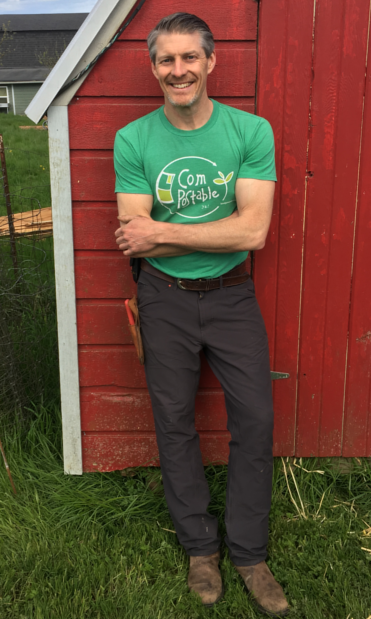Healthy food, grown at home is accessible and life changing. Connecting ourselves to our food does not require expertise, vast tracts of land or huge deposits of time. The ‘upside’ of being a ‘grow it yourselfer’ calls us to rhythms and connects us to our surroundings.
We look at tiny seeds and insects with purpose – seeking their wisdom. We humbly wait for miracles of photosynthesis to birth our next meal.

We’ve had the privilege to live in our little piece of paradise for 7 years: raising our 4 kids and all the while seeking a deeper connection with our surroundings. Our 1.5acre property has had a unique history of housing an apple orchard – only a few trees still stand from that era – a large bullpen, a tree nursery operation and commercial ostrich rearing. As we’ve settled here, we’ve been building the soil, saving seeds, hatching chicks and today, for me, it all culminated in a 10 minute rainy foray gathering from the garden.
It’s a damp Saturday morning and everything in our home is chill.
My wife is out of town for a funeral and I’m writing a card to accompany the gift I’ll give at a friend’s wedding later today.
The usual early riser is up . . . early, playing basketball outside in pajamas.
The sleeper in-ners are sleeping in.
The ‘newspaper delivery teenager’ stumbles outside to his morning route just as the drizzle turns to a downpour.
Even on a lazy Saturday morning, I still need to make breakfast so . . . I do the ‘usual’; grab a bowl and head toward our garden. “I’ll make an omelet”, I tell myself.
The ingredients, as always, are TBD. I wander between garden beds with a steaming coffee in one hand (Ethiopian, Sidama via French press to be precise) and my gathering bowl in the other to see what appeals.
Now to determine the omelet ingredients . . .
One head of garlic, gently eased out of a row, where heads are still forming cloves. Mature garlic is still a month away from harvest but we are always eating garlic thru the year– fresh cloves, cured cloves, fresh scapes and this – a whole head that still looks more like an onion than garlic – in early June.

Tatsoi (a deep colored green) that tastes great raw or cooked – quite akin to bok choy. It’s a newcomer to our garden this year. It did great in early spring, now it’s shooting for the sky and pumping out yellow flowers that will go to seed. The bees enjoy pollinating tatsoi. Lower down the flowering stalks are plenty of lovely, rounded leaves to pluck for the omelet.
A variety of chard – it’s also starting to go to seed and it’s prolific. The plants are over 5’ tall now and some leaves are bigger than my hands.
Then there’s the green love of my life aka kale. We have at least 4 types of kale growing and I love them all. Purple leaves, variegated dark green leaves, smooth and light green leaves. Kale is all over at our place and it’s rarely in rows. That’s because kale is the easiest plant to grow in our garden. It often ‘self seeds’ so that ‘volunteers’ show up each spring to continue their awesomeness with no planning or labor required. Kale is like a stray puppy, if it shows up we keep it. Nature is generous!
Kale can manage hot weather better than most other greens and is hardy through the winter. If you google ‘healthiest veggies’ or something along those lines you’ll likely end up with KALE at the top of your search results.
I eat kale raw in salads, as a staple in egg and stir fried rice dishes and our family enjoys kale chips as well – a bit of salt, oil or nutritional yeast (or all of them) sprinkled on kale leaves and popped into the oven or dehydrator and you’ve got an amazing snack but . . . I digress, back to the omelet.
We’ve block planted a little bed of green onions which are pumping. I snag half a dozen of the longest stalks– every time I do it stimulates the remaining stalks to shoot higher! Don’t you love how harvesting causes more growth?!
I say ‘good morning’ to our hens. Their eggs are brilliant because our heritage breed chickens are a diverse mixture of colors and personalities. We offer them a safe coop at night, non-GMO feed and an organic orchard in which to forage each day. I’ve lived elsewhere, more rural, where eagles would drop down and fly off with a live chicken and the ravens would visit the coop to help themselves to eggs. It felt like a tough place to be a chicken there. But, where we live now, the ‘girls’ are usually not hassled by the bigger, tougher locals.
It’s only 10 minutes to muster the parts and pieces of breakfast but it’s already evident that it will be a masterpiece. Not because I’m the one who will cook it but rather because of the intricate backstory of ingredients in which I’ve been a privileged participant.
What a connection. What an omelet!










